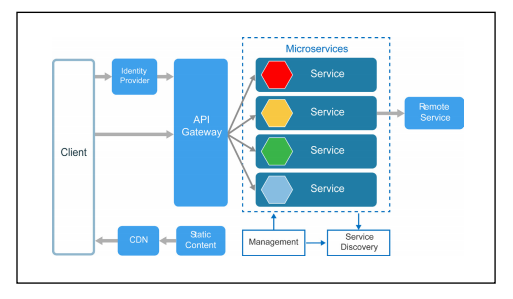Microservices Architecture: Building Scalable Applications in Modern Software Development
In the fast-evolving landscape of software development, organizations are constantly seeking ways to enhance scalability, flexibility, and maintainability in their applications. One architectural style that has gained significant traction is microservices architecture. By breaking down applications into smaller, independent services, microservices offer a robust framework for developing scalable and resilient software systems that meet the demands of modern business environments.
Understanding Microservices Architecture
Microservices architecture is a design approach where an application is structured as a collection of loosely coupled services. Each service is focused on a specific business capability and can be developed, deployed, and scaled independently. This contrasts with traditional monolithic architectures, where all components are tightly integrated into a single unit, making updates and scaling more complex.
By isolating functionality into discrete services, developers can utilize various programming languages, databases, and frameworks tailored to the specific needs of each service. This flexibility allows teams to choose the best tools for the job, optimizing performance and development speed.
Scalability and Performance
One of the primary advantages of microservices architecture is its inherent scalability. Organizations can scale individual services based on demand rather than having to scale the entire application. For instance, if a specific feature experiences increased traffic, only that service can be scaled up, leading to more efficient resource utilization.
This targeted scaling not only enhances performance but also reduces operational costs. Cloud platforms offer dynamic resource allocation, enabling businesses to automatically scale services up or down based on real-time usage patterns. This elasticity is essential for handling varying workloads, ensuring that applications remain responsive even during peak times.
Enhanced Development Speed and Agility
Microservices architecture promotes agility in development processes. Teams can work on different services simultaneously without affecting one another, facilitating continuous integration and deployment. This modular approach allows organizations to adopt DevOps practices more effectively, reducing time-to-market for new features and updates.
Moreover, because services are loosely coupled, they can be updated independently. This reduces the risk of introducing bugs across the entire application when changes are made, enhancing overall stability. With shorter development cycles, teams can respond quickly to user feedback and evolving business requirements, making it easier to innovate.
Challenges and Considerations
Despite its many benefits, adopting microservices architecture is not without challenges. The complexity of managing multiple services can lead to difficulties in monitoring, debugging, and maintaining the overall system. Each service needs its own deployment pipeline, which can increase operational overhead.
Additionally, inter-service communication introduces latency and potential points of failure. Developers must implement robust API management and service discovery mechanisms to ensure smooth interactions between services. Monitoring tools are also crucial for tracking performance and diagnosing issues across the distributed architecture.
Conclusion
Microservices architecture represents a transformative shift in how applications are built and deployed in modern software development. By enabling scalability, enhancing development speed, and promoting agility, microservices empower organizations to meet the dynamic needs of their users. However, careful consideration of the associated challenges is essential to ensure successful implementation.
As businesses continue to navigate digital transformation, embracing microservices can provide a significant competitive advantage. By leveraging this architecture, organizations can create resilient, scalable applications that not only respond to current demands but also adapt to future changes in the technology landscape. In this way, microservices are not just a trend but a foundational approach to building the software of tomorrow.


